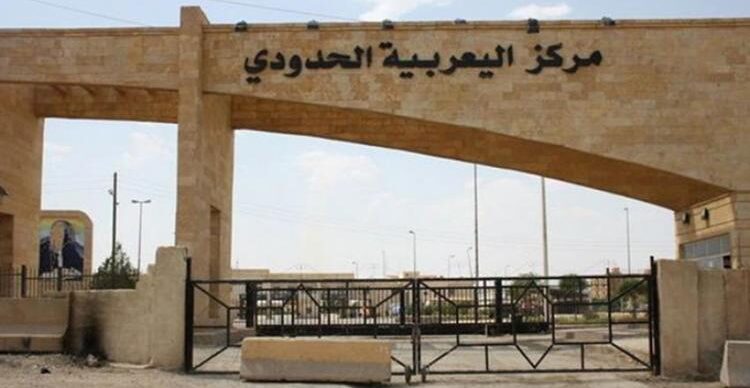Despite efforts of the Autonomous Administration of North and East Syria (AANES) to develop productive sectors and the local economy within the available possibilities, there are obstacles that hinder the achievement of these goals.
The AANES areas are classified as among the richest ones in Syria due to the economic resources diversity, including oil, agriculture, developmental projects, and border crossings.
Objectives and Obstacles
The AANES has established around 13 factories in various sectors with the aim of establishing a strong local economy in its regions in recent years. However, the mismanagement of this economic system has hindered achieving the goal, according to officials of the AANES.
Those obstacles have prompted the AANES to make changes at the structural level of the Economy Board and implement new strategies to revive its weak economy.
Those responsible for the economic sector in the AANES emphasize that the main objectives include building a foundation for a local economy by organizing the mechanisms of economic work, developing and organizing the key productive sectors, and enhancing their performance levels.
Muhammad Shawqi, Co-chair of the Economy Board of the AANES, says they aim to use the available economic resources in the region and distribute them among economic sectors in a way that achieves tangible added value and increases the capital accumulation in their areas.
“We work on diversifying the production base, improving work and performance levels in productive sectors. This includes diversifying income sources through the implementation of projects related to infrastructure and small to medium-sized development projects that will meet many of the needs of local markets and create job opportunities for those entering the labor market”, he told North Press.
However, these objectives face many challenges due to a lot of repercussions, most notably the deterioration of the exchange rate of the Syrian pound (SYP) against the US dollar and the decline of purchasing power, in addition to weak investments and a lack of capital inflow into the region due to the instability of security and economy, which in turn affects the productivity level in economic sectors, according to Shawqi.
During the years of war against the Islamic State (ISIS), the northeastern regions of Syria have suffered massive destruction in key sectors, including education, health, agriculture, and economy.
In addition, the Syrian pound witnesses a significant decline in its value against foreign currencies, especially that the exchange rate of the Syrian pound against the US dollar on black market reaches around 14,000 SYP.
On the ground, the AANES regions are the best in terms of individuals’ income, both in public and private sectors, compared to regions held by the Syrian government or the opposition.
Observers believe that the noticeable improvement of the income, reaching approximately $80 as a monthly salary for employees of the AANES, is not enough because a family needs about $200, compared to the economic inflation the country is experiencing.
This is what Shawqi emphasizes, as the increase in inflation levels in the circulating currency raises the cost of production, thus leading to an economic cost increase, which in turn pushes prices to high levels again.
“All of this causes an increase in prices of goods and materials in various markets, affecting people’s living standards due to the decline in consumers’ purchasing power. This is reflected in the contraction of domestic production, leaving negative effects on the local economy, the volume of production, total consumption, investments, and others,” he added.
The co-chair emphasizes that “the bright spot in this scene is that the AANES continues to provide the necessary public services within its capabilities and difficult economic, financial, and political circumstances.”
Concerns and Challenges
The lack of economic growth despite the diverse resources in the AANES areas is justified by several points that hinder the revitalization of the economic sector.
He explains that a group of fundamental challenges faces the AANES areas, most notably “the unstable security situation and ongoing Turkish attacks, which increase concerns among investors, raise the level of investment risks, and affect the volume of investment activity.”
Another issue is the decline in the purchasing power of the Syrian pound, in addition to the financial deficit in the AANES’ budget due to the significant support provided for bread and fuel, according to Shawqi.
Meanwhile, another dilemma facing the administration is “border crossings and the control exercised by other parties over the issue of opening or closing them, as most of these parties impose a siege on the region in one way or another.”
He emphasizes that the failure to open an official crossing with northeastern Syria, such as al-Ya’rubiyah (Tel Kocher) border crossing with Iraq, “also affects the provision of production requirements and technologies or leads to crises in many markets due to the limited flow of goods and commodities to them.”
Tel Kocher border crossing is located on the Syrian- Iraqi border and was the most official crossing between the two countries prior to the Syrian conflict in 2011.
In 2014, the UNSC allowed aid deliveries into Syria through four border-crossings al-Ramtha crossing with Jordan, Bab al-Salameh, Bab al-Hawa with Turkey, and Tel Kocher with Iraq, that are not under the control of Syrian government. However, under pressure of Russia and China, the UNSC reduced them to one in the beginning of 2020, which is the Bab al-Hawa crossing.
The co-chair emphasized that they always demand the opening of Tel Kocher crossing to enable them to officially import products, production supplies, and necessary materials, and to obtain the necessary technology to operate production projects, thus raising the level of economic performance in the region.
“However, what happens is that the open crossings are subject to political bargaining with the AANES by other parties under various names”, he added.

